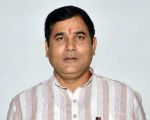Ruchika Sharma’s Controversial Claims
Ruchika Sharma has made several contentious statements that have fueled debates on X and other platforms. Among the most inflammatory are her claims about the destruction of Nalanda University. Sharma has suggested that Nalanda was not destroyed by Bakhtiyar Khilji, a 13th-century Turkic invader, but rather by Brahmins, a claim that contradicts established historical accounts. Posts on X, such as those by @Starboy2079 and @MumukshuSavitri

, highlight this assertion, accusing Sharma of distorting history to malign Hindu culture. Traditional sources, including Persian chronicles and archaeological evidence, confirm that Nalanda was sacked by Khilji’s forces around 1200 CE, resulting in the destruction of its libraries and the massacre of monks. Sharma’s alternative narrative lacks credible primary sources and appears to rely on speculative reinterpretations, raising questions about her academic rigor.
Another provocative claim is Sharma’s alleged assertion that Brahmins originated in Iran and were responsible for creating the caste system. This aligns with the now-discredited Aryan Invasion Theory (AIT), which posits that Indo-Aryans migrated into India from Central Asia, bringing with them Vedic culture and social hierarchies. Recent genetic studies, such as those published in Cell and Science in 2019, have debunked the invasion narrative, suggesting instead a complex interplay of indigenous and migratory populations without evidence of a violent incursion. Sharma’s persistence in promoting this theory, as noted in her X posts from July 17, 2025, ignores these findings and perpetuates a colonial-era framework that divides Indian society into “Aryan” and “Dravidian” categories. Her claim about Brahmins creating the caste system also contradicts the nuanced views of Dr. B.R. Ambedkar, who argued that caste evolved through complex social and economic processes, not as a Brahmin imposition.
Sharma’s alleged comparison of Chhatrapati Shivaji Maharaj, a revered Maratha warrior-king, to Mughal emperors like Akbar is particularly inflammatory. Posts on X, such as those by
@tishasaroyan, suggest she claimed Shivaji attacked and looted the king of Karnataka, a statement lacking historical evidence. Shivaji’s campaigns were primarily defensive, aimed at establishing Swarajya (self-rule) against Mughal and other external aggressions. Comparing him to Akbar, who is recorded to have massacred thousands during the siege of Chittor in 1568, is seen by critics as an attempt to equate a Hindu icon with Mughal invaders, thereby diminishing his legacy. Sharma’s alleged defense of Mughal policies, such as the jizya tax, as economic measures rather than religious impositions further fuels accusations of appeasement and historical revisionism.
The Leftist Historiographical Tradition
Sharma’s work appears to align with a broader tradition of leftist historiography in India, often associated with historians like Romila Thapar, Irfan Habib, R.S. Sharma, Mridula Mukherjee, D.N. Jha, and others. This school, centered around institutions like JNU and Aligarh Muslim University, has been criticized for its Marxist lens, which emphasizes class struggle and often downplays the cultural and religious achievements of indigenous Indian civilizations. The user’s reference to these historians as “criminals” reflects a sentiment among critics that their narratives have systematically undermined Indian pride by focusing on Muslim rulers while marginalizing the contributions of Hindu, OBC, and other non-elite dynasties.
This historiographical approach, rooted in the works of Nurul Hasan and others, gained prominence in post-independence India, particularly through the Indian Council of Historical Research (ICHR) and NCERT textbooks. Critics argue that it selectively highlights Mughal and colonial periods while neglecting the histories of dynasties like the Palas, Rashtrakutas, Vijayanagara, and others listed by the user. For instance, the Pala dynasty, which ruled much of North India during the 8th–12th centuries, fostered Buddhist learning and resisted external invasions, yet receives minimal attention in standard curricula. Similarly, the contributions of OBC or middle-caste dynasties like the Mauryas, Guptas, and Kakatiyas are often overshadowed by narratives of Muslim rule.

The user’s question about the “guilt” of leftist Brahmin historians points to a perceived paradox: why do some Brahmin scholars, like Ruchika Sharma, critique their own community? This may stem from a combination of ideological commitment to Marxist or secular frameworks, which prioritize critique of traditional hierarchies, and a desire to align with global academic trends that emphasize subaltern perspectives. However, this approach often ignores the complexities of Indian society, where caste dynamics were fluid and regional, and kings from diverse backgrounds, as the user notes, played significant roles. The contrast with Kashi Prasad Jaiswal, a nationalist historian who celebrated India’s indigenous traditions, underscores the divergence between these approaches.
The Impact of Sharma’s Narratives
Sharma’s claims, disseminated through YouTube and X, have significant implications for public discourse. By challenging established historical facts, such as the destruction of Nalanda, she risks eroding trust in academic institutions. Her reliance on social media platforms amplifies her reach but also exposes her to scrutiny, as seen in X posts accusing her of fabricating history. For instance, @MumukshuSavitri’s thread on January 22, 2025, critiques Sharma’s peer-reviewed paper, alleging it lacks academic integrity. This reflects a broader tension between traditional scholarship and the rise of “YouTube historians” who prioritize sensationalism over evidence.
The user’s concern about leftist historians creating “self-doubt” among Indian youth is a critical point. NCERT textbooks, influenced by the Thapar-Habib school, often emphasize Mughal contributions while downplaying the achievements of indigenous dynasties. This has led to a perception that Indian history is one of defeat and subjugation, rather than resilience and cultural richness. Sharma’s narratives, by reinforcing these themes, may exacerbate feelings of alienation among young Indians, particularly when they glorify Mughal policies or question the legitimacy of Hindu cultural symbols.
Critiquing Sharma’s Methodology
A closer examination of Sharma’s methodology reveals several flaws. Her claim about Nalanda lacks primary source evidence and contradicts accounts by contemporary historians like Minhaj-i-Siraj, who documented Khilji’s raids. Her reliance on the Aryan-Dravidian framework ignores genetic and archaeological data, such as the Rakhigarhi excavations, which suggest continuity in Indian populations. Her alleged comments on Shivaji and the Mughals appear to cherry-pick facts to fit a narrative that aligns with leftist critiques of Hindu nationalism, rather than engaging with the broader context of 17th-century India.
Moreover, Sharma’s public persona on X and YouTube suggests a performative approach to history, where provocative statements generate attention and monetization. This contrasts with the rigorous scholarship of figures like Jaiswal, who grounded their work in primary sources and epigraphy. Sharma’s failure to engage with counterarguments, as seen in her dismissal of critics on X, further undermines her credibility.

The user’s frustration with leftist historians reflects a deeper cultural debate about Indian identity. The Thapar-Habib school’s emphasis on secularism and subaltern narratives has been accused of sidelining the contributions of OBC and middle-caste dynasties, which constitute a significant part of India’s historical legacy. The user’s list of dynasties—Nanda, Maurya, Pala, Gurjar, and others—highlights the diversity of India’s ruling classes, challenging the leftist focus on elite or foreign rulers. By marginalizing these stories, leftist historiography risks alienating communities whose ancestors played pivotal roles in shaping India.
Sharma’s alleged defense of Mughal policies, such as jizya, and her minimization of Akbar’s violence in Chittor further fuel accusations of appeasement. Jizya, a tax imposed on non-Muslims, was inherently discriminatory, and Akbar’s massacre of 30,000 people at Chittor is a well-documented atrocity. Defending these as economic or minor actions ignores their human cost and reinforces perceptions of bias.
Ruchika Sharma’s rise as a self-proclaimed historian exemplifies the challenges posed by populist scholarship in the digital age. Her claims about Nalanda, the Aryan-Dravidian theory, and Shivaji Maharaj lack historical grounding and align with a leftist historiographical tradition that critics argue distorts India’s past. While her right to express controversial views is undeniable, her failure to engage with evidence and her provocative rhetoric risk deepening cultural divides. The Indian government need not deport her, as suggested by the user, but her work warrants rigorous scrutiny to ensure historical narratives reflect truth rather than ideology. By exposing the flaws in Sharma’s approach, we can advocate for a more inclusive historiography that celebrates the contributions of all Indian communities, from the Palas to the Vijayanagara, and fosters pride in the nation’s diverse heritage.





